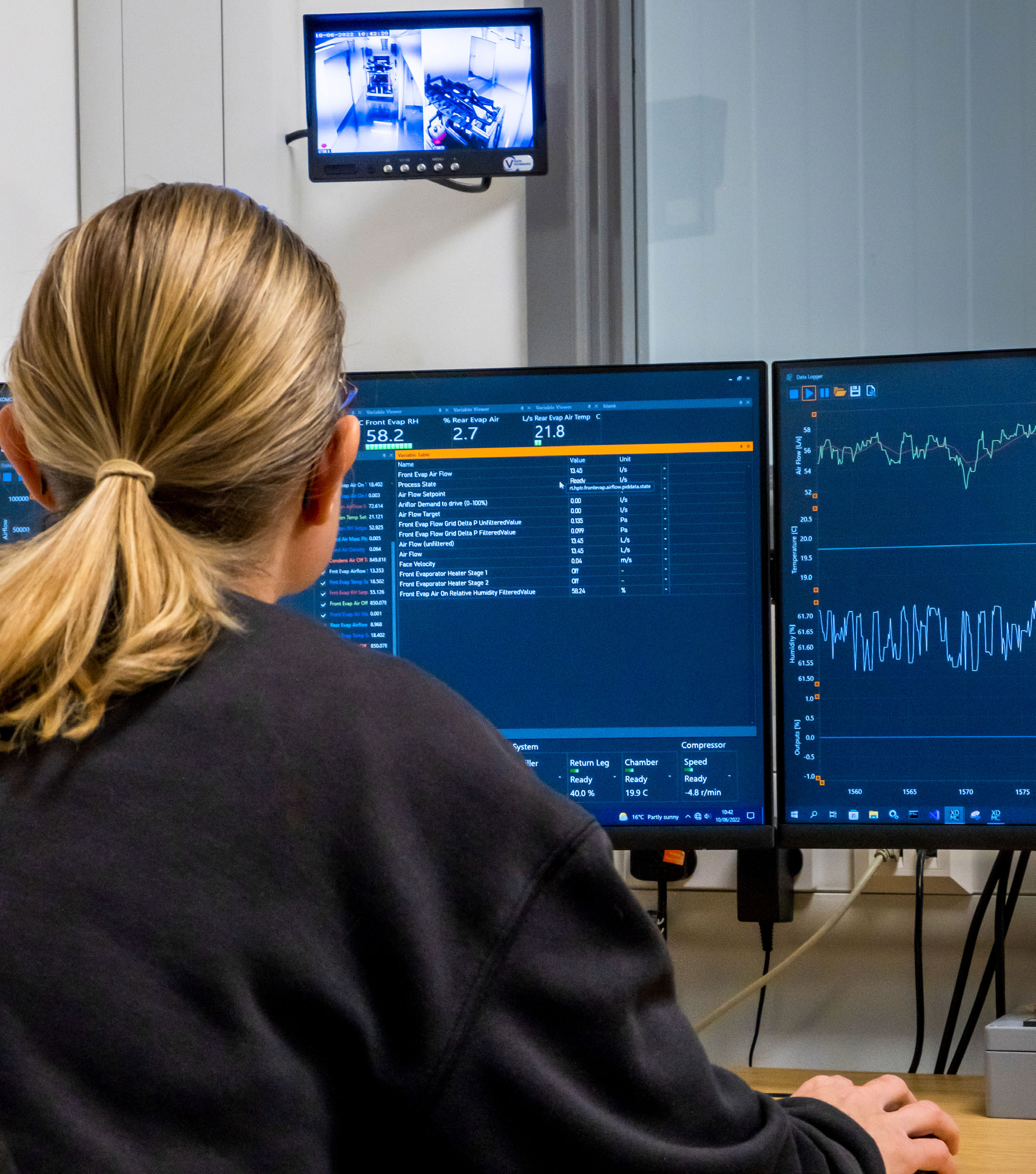Approach
HORIBA MIRA purchased the target vehicle, which was stripped down and comprehensively instrumented with more than 250 sensors, covering temperatures, airflows, pressures, currents, voltages and the vehicle communication network (CAN).
The vehicle was then put through a comprehensive suite of benchmarking exercises across HORIBA MIRA’s facilities (proving ground, climatic chambers, climatic wind tunnel etc.) capturing the full range of operation, including hot and cold starts, elevated temperature at high speed, gradeability, repeated acceleration, charging/battery preconditioning, and standard range cycles such as WLTP and EPA ‘5-cycle’.
Engineers from HORIBA MIRA worked with the OEM team to define the aims, instrumentation lists and test plans to ensure that facility time was used as efficiently as possible. The same team then handled the data processing and analysis, working through the huge volumes of information generated by three weeks of intense testing.
Successes and benefits
Engineers from HORIBA MIRA led the complete benchmarking process, with key benefits including:
- Suitable benchmark vehicle identified, acquired and instrumented by HORIBA MIRA meant that OEM had confidence that the targets generated would give them a competitive product.
- Access to HORIBA MIRA’s state of the art facilities and specialist equipment in a single location gave an efficient and comprehensive measurement activity.
- HORIBA MIRA’s considerable experience in test planning optimised the benchmarking to ensure maximum value for money with efficient use of high capital facilities and flexibility around re-scheduling.
- Comprehensive benchmarking of the vehicle generated huge volumes of data for analysis. Both the technical report and valuable raw data were delivered to the OEM, meaning immediate decisions could be made now and deeper investigations into the data could be conducted throughout the product development if they needed.
The expertise and resources at HORIBA MIRA meant we could handle all aspects of this project, from identifying and sourcing a suitable benchmarking vehicle to planning and executing a complex series of tests in-house with no risk to the end customer. If the customer had wanted to outsource each test individually, the project would have been significantly more time consuming and expensive.
Ben Gale, Solution Leader for Automotive Energy Efficiency, HORIBA MIRA

